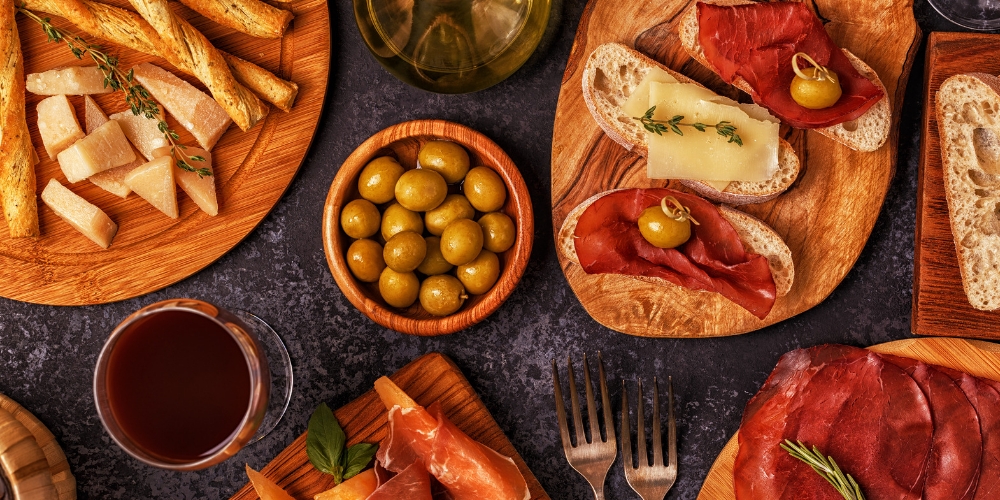Italy is home to such beautiful (and often good!) things, and it’s not unusual finding that some inventions, attributed to other countries, they actually happen to be Italian. But even the opposite may reveal true: you could be sure that such and such thing was Italian and, by chance, you found out that it is not!
Below we have identified "7 things you thought were Italian... But they aren't!": let's go find out all of them!

Food and recipes: a minefield

The world of cooking is highly competitive and highly subject to influence and contamination. It is not always possible to trace the origin of a particular recipe or food. It is in this area, particularly conducive to the emergence of beliefs and clichés, that we have identified "7 things you thought to be Italian, but aren't at all." Let's discover them together.
7. Fettuccine Alfredo

Fettuccine Alfredo is perhaps the most beloved "Italian" dish abroad, boasting among its admirers such famous people as the legendary Jimi Hendrix. Unfortunately, even in this case we are faced with a big misunderstanding: these fettuccine have, yes, an Italian origin, but the recipe that is served today has nothing to do with the dish that was invented by Alfredo Di Lelio, who thought well of making a super energetic dish for his wife who had just given birth to their baby.
A caloric bowler made with butter and Parmesan cheese, which abroad turned into a real monstrosity: from butter they switched to cream with the addition of parsley, chicken, garlic, shrimp, and you name it. To taste the right recipe the only solution is going to Rome, to the restaurant Il Vero Alfredo.
6. Tomato

Tomato, botanically a “real fruit”, is used throughout Italy: tomato sauce, in a thousand variations and recipes, is the most classic accompaniment for pasta or pizza, and is often identified as one of the symbols of our Belpaese. As many know, however, tomato is actually a Central/South American plant.
The first European country to import this fruit was Spain and, given its close relat ionship with Italy in the 16th century, tomatoes soon arrived here as well.
For almost two centuries the tomato was not very successful in Italy, probably because of the sour taste, not associated with anything known up to that time.
The Italian name of tomato, “pomodoro” (literally “golden apple”), as can be easily deduced, comes from the color of the first imported fruit, closer to yellow than the current red.
5. Cannolo

Cannolo is one of sicily's sweet excellences currently included in the list of traditional Italian food products. A mouth-watering recipe that certainly all tourists who find themselves in Sicily want to taste.
A universally recognized symbol of Italian cuisine, then. But this delicacy made with ricotta cheese, candied fruit and chocolate may have Arab origins!
Indeed, it seems likely that some women who lived in one of the harems of Caltanissetta (derived from Kalt El Nissa) invented it. It’s told that these concubines were skilled cooks and that they devised the cannolo by reworking an Arab recipe using ingredients found in Sicily. Et voila, there goes the modern cannolo come to life!
4. Pasta with chicken

Pasta with chicken is one of those dishes for which a starred chef might get sick. Pairing two famous and simple recipes from Italian cuisine is an all-American way to have it all and now: the matter is determining what makes a side dish to what, and especially whether one wants to venture into these daring culinary experiments.
3. Graffe

Graffa, the symbol of Campanian pastry, of which there are a thousand versions and variations (filled with various creams and delicacies), but always strictly fried and sugar-coated, are actually a dessert of Austrian origin.
Indeed Campania, which during the 18th century was under Austrian domination, found itself in contact with foreign customs and traditions, and inevitably, Neapolitan cuisine was also influenced by the recipes of the rulers.
Hence, from the small German krapfen filled with jam, came the much larger local graffa, with all the modifications mentioned above.
2. Spaghetti bolognese

Bolognese is a famous sauce in Italy, with which you can dress tagliatelle or magnificent lasagna. It is certainly not a light meal, but there is no question about the taste.
Yet, no one knows why, there is a widespread idea that its combination with spaghetti depict a typical Italian dish. Nothing could be further from the truth!
This plate very often consist of two forkfuls of plain pasta lightly smeared with a tiny bit of meat sauce. In short, we are not far from the terrifying pasta with ketchup!
1. Eggplant

A true queen of the table during the summer, eggplant is used in so many preparations: fried, roasted or simply cooked in a pan, it is always delicious.
Perhaps not everyone knows, however, that the eggplant is a vegetable of Indian origin and was brought to Europe only from the 16th century.
Once again, we have the Arabs to thank for the spread of this mouth-watering vegetable, the basis of a large number of incredible Italian recipes, especially in the south of the peninsula.
About the author
Written on 06/06/2022



Chiara Spaziano
Let's discover together some things that are mistakenly thought to be Italian, while they have a completely different origin.